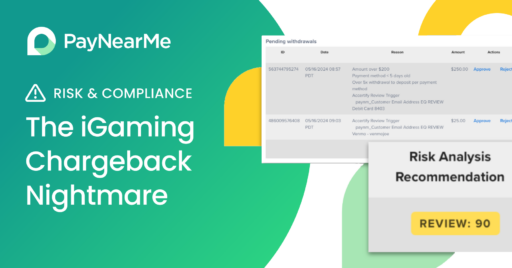An Interview with Danny Shader at the Montgomery Summit 2020

The following excerpt is from an interview between Dan Dolev, Research Analyst at Macquarie and Danny Shader, CEO of PayNearMe at The Montgomery Summit 2020. The video has been uploaded to YouTube and included below, courtesy of The Montgomery Summit and MontyTV.
Dan Dolev (DD): Good morning, I’m Daniel Dolev, Macquarie’s payments and business services analyst and I have the pleasure of hosting Danny Shader, the founder and CEO of PayNearMe. So maybe you can tell us a little bit about PayNearMe? What do you do and how are you disrupting the space?
Danny Shader (DS): Sure! We are a complete end-to-end payments workflow or payments customer relationship management system for billers. Most billers don’t have the kinds of IT resources that are needed to build systems on top of Stripe or Braintree or something like that. They need application level software that can take over the entire payment experience yet still adhere to their business rules they want to follow. That allows them to spend their limited resources on the things they really care about.
DD: And how is that different from what Stripe does or Braintree does? What’s the key difference there?
DS: So Stripe Braintree are essentially developer toolkits, very sophisticated developer toolkits, that let sophisticated developers build really great payment experiences. The customers that we’re serving don’t have the developers or the resources to take advantage of like that.
Instead, we provide them with a flexible, configurable set of software tools that takes over the entire payment experience. That allows our customers to spend their resources doing things like improving their lending management systems, or their lending rules, and not spend their effort on the customer experience, which is what we handle.
DD: Some of the research sounds like PayNearMe goes straight into that market of untapped opportunity, of B2B, which is worth trillions of dollars. Maybe you can talk a little bit more about the overall global TAM [total addressable market] that you’re seeing for your solution.
DS: We see on the order of a few trillion dollars in TAM but it’s not pure B2B. We’re not doing B2B payments. It’s a B2B2C payment infrastructure, so we’re allowing lenders and property managers and others to collect payments or rent or tickets (if it’s the court system) from consumers with a modern, convenient payment experience that improves their ability to collect and process payments.
DD: That area of that you’re disrupting right now is done basically almost manually, right?
DS: It’s often done with a lockbox in the case of, you know, checks. The other thing is that consumers today need to pay their bills in all forms of tender. It’s not just cards and ACH and the modern things. There’s still a huge portion of the population that needs to make payments in cash. In the PayNearMe system if they’re choosing this month to pay with cash, they’re just walking in with a barcode to a local store, scanning that barcode and handing over their cash, and they’re getting a real time electronic payment.
By the way, they’re probably doing that from their phone. But next month, maybe they’re flush. So they’re paying off their phone using their bank account or they’re paying off their phone using Apple Pay, right? We allow that biller or that government agency to collect payments from consumers in whatever form is the easiest way for that consumer to pay.
DD: You’re talking about something really interesting when you’re referring to the underbanked population. That’s a huge population—we estimate that there’s 50 to 60 million underbanked and unbanked in the US alone.
DS: Yeah, it’s a quarter of US households, right? We started as a company that built this real-time electronic cash network. Our customers who are these businesses and government agencies said, “You’re radically better at doing cash. Why don’t you process my cards and ACH?”
What happened was, by taking over all their payments, we were able to take over the payment page and we were able to take over the mobile experience and we were able to take over the customer service rep interface and we implemented the business rules that tie all that together. We were able to take over the push payments and take over the reconciliation, and all that. We put the whole thing together into an end-to-end, essentially a configurable enterprise software package, that does, for lack of a better term, payment customer relationship management.
DD: It’s very, very interesting. And if you think like five years out or ten years out, what is your vision for you know, the digitization of payments overall?
DS: I think all payments become digitized—even cash—but cash isn’t going away. So cash needs to be, and we make it that way, as easy to do as paying with a card or paying with Apple Pay or paying with Google Pay or Venmo or Square Cash or whatever.
But, you know, there’s still going to be an underbanked population. There’s still going to be people who are paid in cash, and those people are still going to need to pay their bills. What our customers want is one vendor who can tie the entire system together. They want one company that can integrate all that into a complete solution and that’s what we do.
DD: Thank you very much for your time. This is very interesting.
DS: Thanks Dan, I really enjoyed it.



